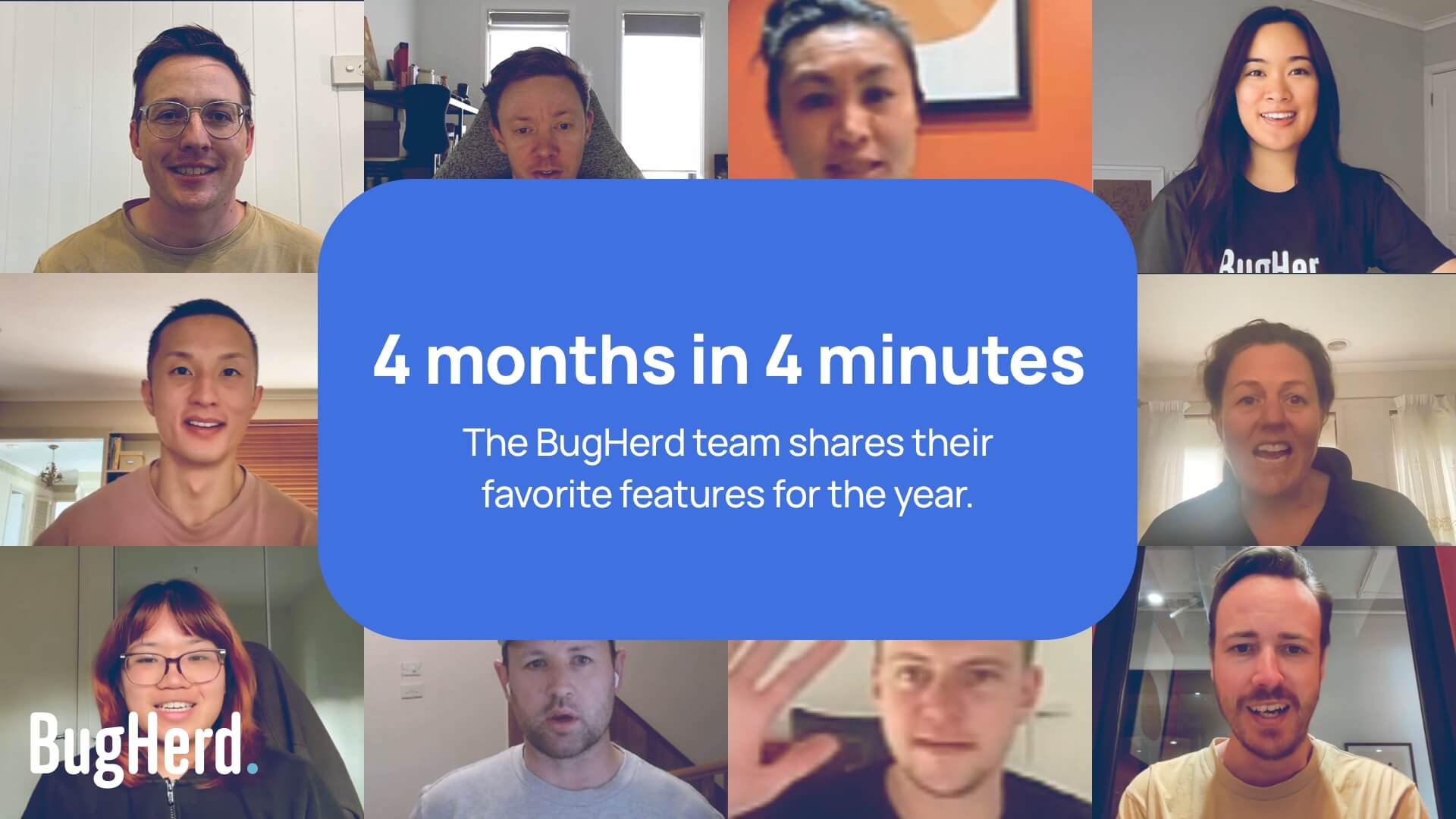I consider myself a pretty lucky Marketer. I get to work with the people who also just happen to be my direct target audience, developers and designers. This comes with both pros and cons. On the upside I get to ask the team at the coalface of the industry what they think of various campaigns and messaging. I can ask them what they think of articles and content and I get some seriously honest answers. On the downside, dev teams generally aren’t fans of marketing. Being analytical types, they are often sceptical and wary of the advertising they see online, and that’s assuming they’re not using an ad blocker (hint: they probably are).
We recently sent a short survey via MailChimp to more than 7500 Bugherd customers, to touch base on how they use our bug-tracker and to analyse and verify market fit. This included an optional ‘marketing’ survey at the end with the opportunity to win a free Macropod t-shirt if chose to complete the questions. More than 150 customers chose to answer. Anyone who tries to tell you ‘Swag’ doesn’t work anymore in Tech is just a sad sack that they didn’t get a free t-shirt.
Whilst the aforementioned pro of being able to ask our own dev team their thoughts on marketing is valuable, it is also a very small sample set. Bugherd customers are typically dev teams (including designers and project managers) ranging from freelancers all the way up to large agencies. This survey provided us an opportunity to reach a large portion of our target audience and learn more about them.
With our prior knowledge of the landscape in mind, based on previous campaigns, Google Analytics data and customer data, we asked the following:
- What is your favourite source for browsing developer/designer news
- What is your choice of Social Media?
- Do you subscribe to any design/dev related newsletters of blogs? If so which ones?
- Do you currently use an ad blocker?
- Who is more likely to make software recommendations within your company?
- Which sources are you most likely to trust a product recommendation from?
- What would pique your interest to try a product?
The promise that the survey would only take a couple of minutes, limited the amount of questions we could ask. Other questions assuming prior knowledge of browsing habits such as “What developer/designer subreddits to you subscribe to?” or “Which news-aggregator do you follow?” were scrapped to allow broader results.

The above chart illustrates the type of people we had responding to the survey. It’s clear that 63% of the entire audience fall into the dev, designer and PM categories. However, it should be noted that nearly 20% were freelancers or owners, CEOs and founders of web agencies.

We would consider making this an open-ended answer in future to potentially gather a broader range of sources, considering that so many and varied sources are available. Regardless of the variety of sources available there are certainly preferred industry leaders.
Interestingly, A List Apart, CSS Tricks (via Syndicate) and Smashing Magazine have all run successful acquisition campaigns for us in the past via sponsorships, advertorial and pay-per-click advertising.

It’s not surprising that devs keep their Linkedin profile up to date when they’re in such high demand across the world. How often developers are actually browsing on LinkedIn is something to be considered for advertising and posting purposes. We’d wager 10 camels it’s very little.
The team in the office agreed to disagree on this one as many of them don’t have a LinkedIn profile. As the above chart reflects the entire response set, we filtered by the ‘dev’ only answers (28%) and the results were surprisingly the same.
If we were to rephrase for further insight, it could be useful to ask about their Social Media use in relation to searching for industry information.
If you’re not sure where to look, you can explore some handy lists at rrrepo for inspiration. Another handy tool is Panda, which provides a newsfeed dashboard for aggregators like Hacker News and Designer News all in one handy, filterable app. An aggregator within an aggregator … how very meta.

This open-ended saw more than 50 different newsletters and blogs listed. It’s a veritable smorgasbord out there for newsletters and blogs catering to everyone who builds the web. If you wanted to reach this audience, where would you even begin? We would always aim to publish content that is relevant to the audience and share it with relevant blogs, on twitter or offer to sponsor a newsletter.

Here’s the 1 billion dollar question. In total, 47% of respondents said “yes” they use an ad-blocker. When filtered by those who answered as developers (above) an overwhelming 64% chose “yes” they use an ad-blocker.
This is a particularly important question and answer for any Digital Marketer in Tech. We are trying to reach an audience that potentially don’t get to see the carefully crafted Google Ads, Banners and sponsored Facebook posts.
A question that could have followed on from this one, would be concerning what level of Ad-blocking they apply. It’s been mentioned around the office that some of the team apply the blocker to filter out “spammy shit” like popups and animation. Some whitelist sites that they trust or even want to give money to. Some just don’t install flash. Therefore, crafting relevant and meaningful text ads to suit this audience is not for naught.

We now have a firm idea on where dev teams hang out online, so who is the best person to point the message at? We aimed to find out who these people do trust …
Word of mouth (WOM) goes a long way and is valuable to Marketers in any industry but for developers it far outshone any other option. Case Studies were marginally more important to project managers, which make sense due to their client facing nature.
We expected the WOM response to be the highest, but it was quite a surprise to see the other examples chosen, adding weight to the argument for utilising channels such as Case Studies and Online Listings and not focusing all efforts into one channel only.

The majority of responses said that the CEO or Owner was the most likely to recommend software. When filtered further into developer and project manager, 58% of developers believe that they are the most likely to make software recommendations within their company and 43% of project managers thought that they were the likely ones.
On the positive side it’s great that recommendations are coming thick and fast from everyone but that doesn’t particularly solve our messaging problem. So who is most likely to make the final purchase decision?

The CEO or Owner was the clear decider. Even developers and project managers could agree on this. It tells us that it would be beneficial to have clear information readily available within our app or website to show those who hold the purse strings.

Speaking of information, the answers on what would pique interest to try a product give a great indication of the kind of content to include within marketing materials and website info. A great open-ended response was –
“A clean, no BS, straight-to-the-point website explaining everything in deeper pages but light enough on the appearance.”
Think this is an excellent summation of how to provide information to the dev team audience in general. In the competitive SAAS market, it seems many Marketers are fighting for a top spot on Product Hunt and a 50K twitter following, rather than considering the good old principles of Targeting and Positioning your product where it’s most likely to be seen, noticed and tried.
What can’t be determined from these results is how each member of a dev team works together to discover and form an opinion on a piece of software to ultimately purchase. We know from analysing our multi-channel conversion pathways within Google Analytics that it often takes multiple visits from referrals, social media or search before a customer even signs up to trial. However, that is just tracking an individual.
Who then looks at, uses and comments on the software is an almost unknown quantity. Implementing in-application analytics such as mix-panel can aide in filling in the blanks but it could be worth asking questions such as “Who in your team would you share ‘XX’ software information with?” or What kind of information would you likely share with your team on ‘XX’ product.”
Ultimately, these results will help us to target, position and differentiate our product in the online landscape and it’s valuable to know that some of our assumptions weren’t too far off the mark.











.jpg)



